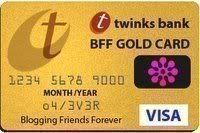It’s funny how French lends an air of respectability to everything. We were driving along the scenic Jackson Lake to Grand Tetons. What does ‘teton’ mean, wondered BigGeek. Now is a good time to disclose the fact that I am the family’s trip advisor, guide and booking agent in one. I am the silly donut (as Chip would mischievously say) that reads up on places and creates spreadsheets and emails a copy to everyone on the party. So, I knew what teton meant: it’s that part of the woman’s anatomy that lies above the waist and below the neck. Naah. I didn’t tell him that. I offered him a half dozen slang words to choose from, but since this is a family blog, I have chosen to employ a pithy euphemism. Really? Said the BigGeek. It doesn’t look like that at all.
Thus began our quest to debate the intentions of the explorer who saw in this mountain range, a err.. grand teton. The Grand Tetons are how I imagine Switzerland to be. Impressive peaks breaking out into the wide blue sky. The sole reason I wanted to visit Grand Tetons was Ansel Adams. No amateur photographer worth her pixel would not attempt Adam’s famous picture at the Snake River Overlook. At the magic hour. When the sun has set but its light lingers on for a little while. I was all set. Batteries, flash cards, lenses, tripod. Everything. I was going to attempt an Adams.
Once we reached the Snake River Overlook, the sun was still pretty high in the sky. I waited patiently for it to hide behind the mountains and scouted the area. The Adam’s photograph was planted firmly in my mind. I had to find right spot and get that framing. How hard could that be?
Very.
I struggled in frustration. I changed lenses, played with tripod heights, crouched, bent, twisted to get the Snake River snaking beautifully from the foreground and twisting away to the mountain peaks. I clicked a few pictures but they looked quite ordinary. Simply No mojo. It was getting late and I clicked away furiously at every exposure, every length I could think of. BigGeek was getting hungry and the only restaurant around for 40miles would close at 9:00pm. I packed the camera equipment sullenly. Adams would have foregone hunger and thirst for the perfect picture. I thought. There was no way I could be a good photographer of I have to keep track of mealtimes, could I.
The pictures I had taken were all super terrible. Not one made the cut. Not one. Ansel Adams had better equipment .. or his amazing talent had more to do with it. Where did I go wrong while framing? Was it the light? Then I realized. Adams took (made) his picture several decades ago. There were no trees there. From the overlook, you had an unobstructed view of the river and the mountains. My view was partially blocked by tall pines and I had to work around that. Perhaps if Adams came here to this exact spot today, he would not give it a second glace. Who knows? I was a fool to try and copy a picture blindly. You have to see it with your heart (cheesy, I know). For the 40 minutes, I could not see what Adams had. Literally and figuratively. The scene had evolved over the years, but like the proverbial immigrant stuck in the decade when he left his country, I had sought to find the familiarity of the picture in the landscape before me.
The only thing left to do now, was drive to the restaurant and eat.
Monday, September 28, 2009
Grand Tetons
Posted by DotThoughts at Monday, September 28, 2009 12 comments
Labels: travel
Friday, September 25, 2009
Big Sky
The thing about writing about a trip you took two weeks after you get back is that everything seems a bit old, you know? A couple of weeks ago, we travelled cross-country (in a metal tube that flies) to World’s first National Park. Yellowstone. We are outdoorsy people. Our shapes and sizes belie this fact about us, but it’s true. Cross my heart. We cannot spend a week sunning on the beach; for one, who needs a tan here, we have a perma-tan and its gets to be boring. Really, really boring. We need to “do” things and “see” stuff. And there is not much in terms of history (compared to say, India or Europe) here, but tons, I mean tons of natural wonders to see.
After a long grueling flight that took us to Ohio, then Utah, we finally set our hiking boots and backpacks and 2 cameras and 6 lenses and a tripod on the soil West Yellowstone, Montana. The county is called Big Sky. What an awesome name, I think that is. I would love to live in a place like this.
West Yellowstone is your not-so-friendly Western Town. Small. The place where they look at “tourists” with disdain or at least with a certain je ne sais quoi, which is ironical, because that seems to be the only source of income for this little town. Takes them a couple of days to warm up. After that, one is actually surprised to find out that the waitress-with-a –viper-tongue or the reluctant-coffee-man actually have the requisite muscles to mould their faces into a smile.
The first I ever read about Big Sky and Montana was in “Zen and the Art of Motorcycle Maintenance” when I was in college. The book has become a rather kitschy icon of philosophy. In not so insignificant ways, the book exhilarated me then, when I read it again a decade later, it sadly failed to have that effect, so a word to the wise, if you really really like a book, it’s best not to read it again. Not after a decade. In the novel, the protagonist rides his motorcycle, thinking about “Quality”, philosophically. It seemed like such an idyllic environment and the name of the county stuck. Big Sky. Like Big Sur. Another name, another place, another book. One day, I said to myself, I would like to visit Big Sky. More than 15 years later, I was in Big Sky, grinning.
Yellowstone is huge. We had 5 full days to explore. And we also wanted to see the Grand Tetons. To try and see the park in 5 days is impossible. So we decided to see what we could, but see it to our heart’s content. And if that meant going to a certain canyon and falls (Fire Hole Canyon) every day as we passed, so be it. It was not a race of been-there-done-that. Or those horrid two week tours of Europe: if it’s Wednesday, it must be Belgium, kinda of thing. That’s no vacation. That won’t life your spirits or make you purr and sigh and wonder about your place in the Universe and all that lark.
Yellowstone is a place with magic. Especially - without the crowds with their $3000 Canon L-series lenses- at twilight, shrouded by a velvet sky, the hot geysers spewing steam and hissing, boiling underneath – a place where the earth comes to PMS. If it decides to get mad, it will turn everyone and their kangaroos in Australia to toast. But it has kept its cool so far, thankfully. The park has over 250 lakes. They haven’t even bothered naming all of them. Countless waterfalls and canyons. Bison roam and graze and cause traffic jams. And gently walk towards your car while you sit there and wonder about how much harm can a 2400lb creature hitting your car at low velocities can cause. The bald eagles and ospreys sit atop trees while hundreds of people park their cars at the side of the road and get their expensive equipment and try and get that perfect shot a la National Geographic. We were no different. Wolves disappear into the maze of light and shadow in the woods. Their hungry eyes leaving you with pity and discomfort. Moose and Elk come graze lazily as the summer winds down. Winter is tough in Yellowstone. Of all the elks and moose and bison and wolves and eagles we saw, how many would actually make it to next spring? It’s a jungle out there.
Chip did remarkable well. He loved the place and he had picked a sturdy stick that became a fishing rod, walking stick, weed whacker and lawnmower with his mind. He made me follow a bison for a 1/2 mile on foot because he was tired of seeing its butt and wanted to see its face. He did not understand the bit about volcanoes or geysers or wasn’t impressed by it, but he found the wide stretches of burnt trees to be fascinating and tried to educate another 4-yr old boy about forest fires while standing in a line for bathroom.
We took pictures. In fact we took a LOT of pictures. 600+. Seriously. We are pixel crazy. But the daunting task that we haven’t got down to doing is to sort, correct and convert their sizes to from Brobdingnagian proportions to human. But the pictures will be stunning. And even if they are not, we demand you stay away from truth, or at least not ask us to come near it.
So, on a scale of things (things being as the national parks we have been to) where will I place Yellowstone? At #2. It’s a beautiful place, quite unlike anything else in the world, yes, but what captured our hearts truly and still has was Denali and Kenai Fjords in Alaska. That, my friends, you should plan to visit once in your lifetime.
Posted by DotThoughts at Friday, September 25, 2009 17 comments
Labels: travel
Wednesday, September 2, 2009
The White Tiger
 Summary
Summary
In essence, this is a story of how Balram Halwai, a man born in a backward village in the “Darkness” and his ambition to rise above his poverty – to not stay a prey, but be the predator – one with a belly. From a job of splitting coals in a teashop, he becomes a driver (chauffeur) to a US-returned son of a landlord. He commits murder, becomes a social entrepreneur (his words), and finally turns into a businessman. The book is comprised of a series of letters written by Balram Halwai to the Chinese Premier Wen Jiabao.
What worked for me
The language. It’s witty, sarcastic, vivid. Very, very irreverent. The “Darkness” where Balram is born and lives is all too plausible and disturbingly familiar. The images of Delhi or the “Light”, as seen through Balram’s eyes are graphic – especially the scene when he sees a masterless buffalo and the lifeless load in the cart it drags. Balram’s state of mind, his observations, and his thoughts are superbly crafted. The plot is simple – or rather there is not much of a major plot here, but a series of episodes or incidences. Yet, the book is a page turner and I was sufficiently invested the characters: Balram, his US-returned employer Ashok, his mini-skirt wearing wife Pinky –all try to break out of their own “rooster coops” - all evoke a sympathy but on very different levels . I liked the fact that the book has layers of meaning. While reading it, I didn’t think much of it, but the fact that it was on the back of my mind for a week, denotes the contrary. I like books that upon chewing them a day or two present undiscovered facets and meanings. It’s like a mini treasure hunt.
What did not work for me
The book is a series of letters that Balram writes to Jaobin. Why? There is no plausible reason for this offered in the book. It felt like a cop-out – a means to bash China while the author bashed India. That is the biggest problem with the narrative. Also, given the scope of the book: India, its dichotomy – Gurgaon and real “gaon”, corruption, caste struggles, poverty, the observations sometimes seemed a bit naïve. Or Jaded. Or both. Corrupt “public servants” sitting under framed pictures of Gandhi is so 1970s filmy. It’s such an overworked idiom. Which led me to think, that perhaps Adiga was aiming this book for an entirely different readership? Not Indians like me, or not Indians at all, but aiming it at the “western” reader who thinks India is all saris and spice. And elephants. Well, there are several mentions of the buffalo in the book, so at least in that regard he is not too far off.
Hot or drop
Hmm. Tough one. If you have nothing else to read, do pick this up. It’s a slightly disturbing read. If you are like me, an Indian, who grew up in India, I wouldn’t ask you to go out of way to read it. But if you do pick it up, it will remind you somewhat of Goodfellas.
Posted by DotThoughts at Wednesday, September 02, 2009 6 comments
Labels: books














